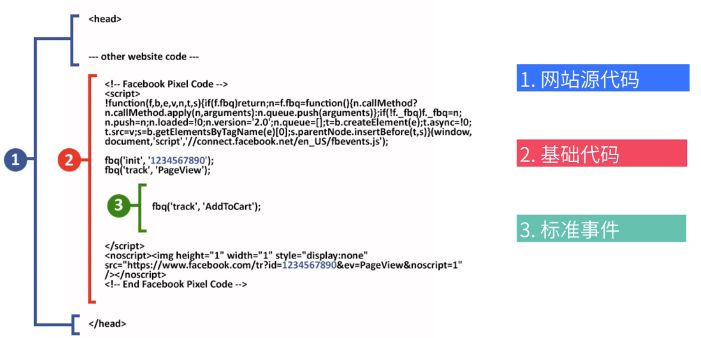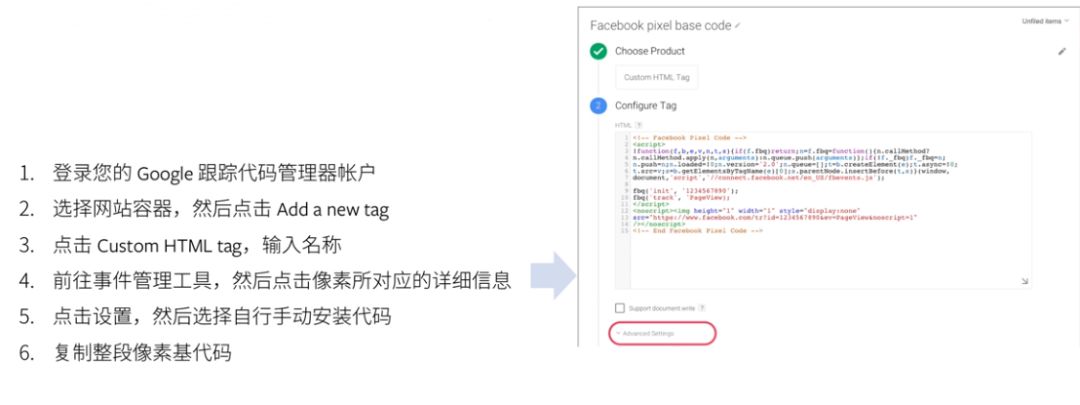A second to understand Facebook ad conversion tracker Pixel (pixel tracking)
In the e-commerce battlefield, advertising, tracking traffic, traffic, conversion rate, sales are the most important concerns of businesses. But how do you accurately target your ads to an audience that might be interested in them and enable them to take action?
Ads don't run but don'tTracking.It feels like driving with your eyes blindfolded. You can't predict exactly how well it's going to work, and there's no way to optimize it more precisely.

And the Facebook Pixel pixel code is exactly thatA great weapon for tracking traffic, movements and conversions!
Let's start with an example of a Facebook Pixel that gives you a clearer look at what it's for:
Suppose your online store sells different brands of cosmetics.
The average woman will be by brand to choose the right cosmetics for their own, the brand is somewhat loyal, will not change the brand casually.
Let's say you're now using a Facebook ad for your store to recommend Lancome's new product, targeting an audience that can be selected by age, gender, and interest.
But if you can target visitors who have visited your store in the past 30 days and browsed other Lancome products. Wouldn't it be better to personalize your ad's performance and conversion rate by tracking user behavior?
Further, for example, if you track visitor behavior and know that a visitor A has purchased a product from Lancome, a visitor B has purchased a product from Shiseido, a visitor C has purchased a product from SKII, and so on. Wouldn't it be more likely to attract purchases if your ad content automatically adjusts to show the brand products that your audience is most likely to be interested in?
To achieve the above effect, you must join the websiteTracking tagsThat's the Facebook Pixel.

1 What is an FB Pixel? How to use it to re-marketing
Simply put, the Facebook Pixel Pixel is a string of codes that track ad conversions, improve audience targeting, and maximize returns on ad spending.
See what people do when they see your ads, create audiences that are similar to the best customers, and market them. For example, view web content, search, add to shopping carts, etc., so that you can understand the consumer's every move.

For example,When a visitor enters a page with a Facebook pixel, the code is triggered and their behavior is recorded, for example, by viewing an item or joining a shopping cart. Signals are sent to the system, and after touching this code, the system can use these received signals for further tracking and optimization.
Visitor behavior data is written into the Big Data Library as a repository for subsequent advertising. At the same time, the code checks the browsing user's machine for Facebook FB cookies, and if so, the behavioral information can be linked from the Facebook user ID.
2 What are the benefits of installing Pixel for FB ads?

Data analysis:Facebook Pixel gives you a better idea of who's accessing data on the site, such as who places an order on the page but doesn't pay, which pages are viewed the most, and how many people are in the shopping cart.
Remarketing:Facebook has Themarket feature, which allows it to market people who place an order on your site but don't pay.
Grab a precise audience:You can build a similar audience by creating a lookalike audience to find new customers who are similar to visitors to your site, so your ads reach more accurate people in the future.
This code is divided into three parts:

1, the original code of the site:Paste the Facebook Pixel pixel code between the head and /head tabs of the page. (You may have copied other code between the head tags before, so all you have to do is paste the Pixel pixel code below the current code, above the /head label).)
2, Facebook pixel base code:Facebook pixel code as shown in the image above, this code will be provided to everyone at the time of installation, do not use special records, just copy the sticker in the place, will be detailed later.

Unique and exclusive Pixel ID

The "number" inside is your exclusive Pixel ID, and this code can never be mistaken, the system's signal reception is followed by this ID, this ID is like your ID number if you get this ID wrong, then the data will be recorded in someone else's system.
If you use it for the first time, you can also find it in Events Manager.
3, standard event code (Standard Event):This code is a special code that needs to be buried on a specific page (ViewContent).

Here is that someone on your specific page (for example, a product page, a product category page), someone has looked at a specific thing, with our standard page if everyone buried more complete, there will be a lot of parameters below.
Paste the standard event code (ex: add a shopping cart code) associated with your page above the /script tag in the Facebook pixel code. You can do this on every page you want to track.
The key here is that each page of the site should contain everything in Part 2 (the underlying code), but different pages should use different snippets of code from Part 3 (standard event code). See another example below.
With standard events and parameters, the signals received by the system are very complete. It knows what events were triggered and what currency was used to view the product name, price, and currency. So let's bury the parameters.
Standard event codes can further assist in understanding a consumer's shopping process (such as where he usually stops), and through standard events we can understand the consumer's journey and catch the person who has been lost at some point.
Consumers' actions on the site are naturally touched or touched through advertising, and so on. The way events are tracked is divided into:
1) Standard event tracking conversion:
Facebook has nine standard events that are preset:
View web content, search, add to cart, add wish list, initiate checkout, add payment information, purchase, lead, complete registration.

With standard event tracking conversions, you can get traffic information for these actions, track conversion actions, optimal conversion rates, and build an ad audience.
2) Track custom conversions:For special situations or needs that you may have, you may want to split or place standard or custom events on your site to achieve the goal of setting the most effective conversion events, which you can use to track custom conversions.
3 How do I bury it?
Position:

In the case of e-commerce, what pages are standard events placed on:


How to add Pixel to GTM:

4 How do I check if the installation was successful?
Method one:You can install the official free extension tool using Facebook「Facebook Pixel Helper」Check for you, go to the official website you set up after installation, and click on the expansion tool to check if the installation was successful.

The green number next to the icon in the Facebook Pixel Helper address bar represents the number of pixels currently sent on the current page. Go to your own website and then tap this tool and you can see if your site has sent the appropriate Pixel ID for the corresponding event. If you install the underlying code on the page, you'll see Page View, and if you install other standard events, you'll see ViewContent. Check the installation, the green mark represents normal, and the red one does not send successfully.
Method two:You can also enterPixel Page, Event Management Toolto see if signals and specific dynamics are received.

5 How does pixel work in ad operations?
1. Track user behavior in the site and reuse the audience tool to generate a website custom audience (WCA)

2, set the optimization level, in the conversion volume, product catalog and other ads to define specific optimization actions.

THE END
Is there a clearer understanding of the Facebook Pixel now? Move your finger quickly and go into your Facebook enterprise user background settings! Believe that it will certainly help your e-commerce conversion!
For more on Facebook ads, keep locking papaya moves.

Recommended reading
Facebook Ads May Product Update: Ultra-Functional Improvements
Go to "Discovery" - "Take a look" browse "Friends are watching"